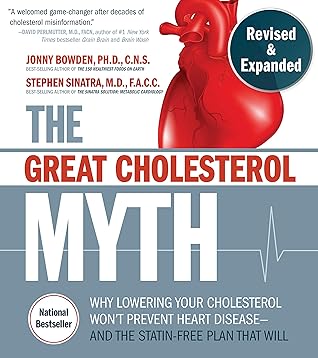More on this book
Kindle Notes & Highlights
by
Jonny Bowden
Read between
November 7 - November 16, 2024
The ratio of triglycerides to HDL is one of the best predictors of both heart disease and insulin resistance (see chapter 9). People with a high triglyceride to HDL ratio have a 16x greater risk of heart disease. That’s a 1600 percent increase!
“Intake of saturated fat was not associated with an increased risk of coronary heart disease (CHD) or stroke, nor was it associated with an increased risk of cardiovascular disease (CVD).” Those folks consuming the highest amount of saturated fat were statistically identical to those consuming the least amount when it came to the probability of CHD, stroke, or CVD. Even when the researchers factored in age, sex, and study quality, it didn’t change the results. Saturated fat did bupkis—it didn’t increase or decrease risk in any meaningful way. Period.
Because the brain absolutely depends on cholesterol to function at its best. Although the brain makes up only about 2 percent of the total weight of the body, it contains 25 percent of the body’s cholesterol. Cholesterol is a vital part of cell membranes in the brain, and it plays a critical role in the transmission of neurotransmitters.


